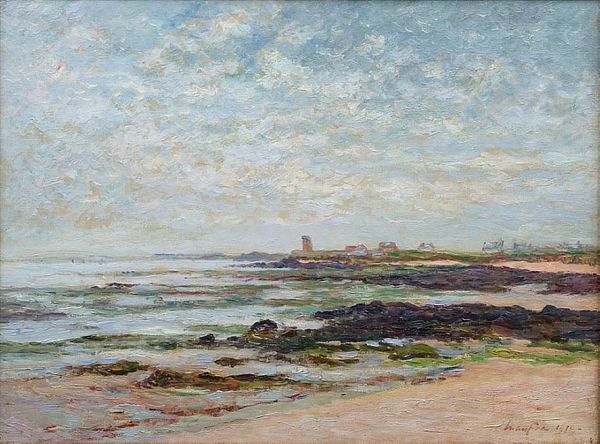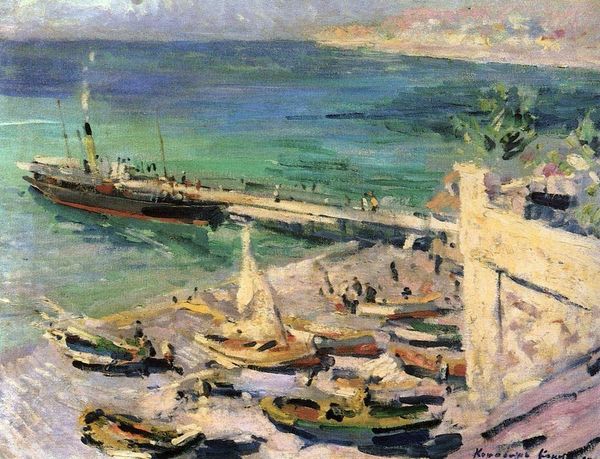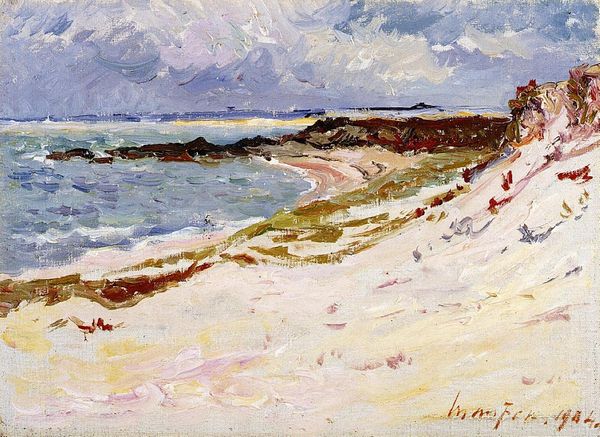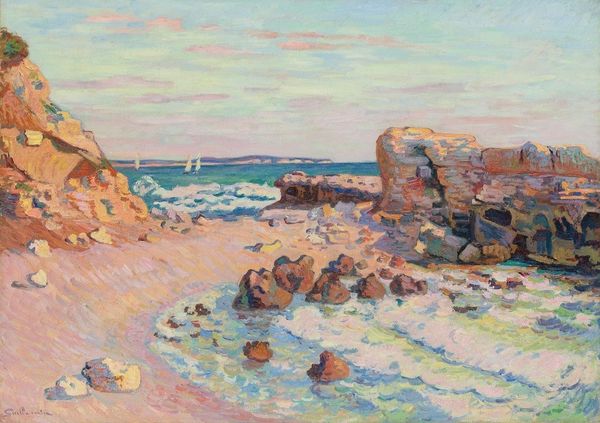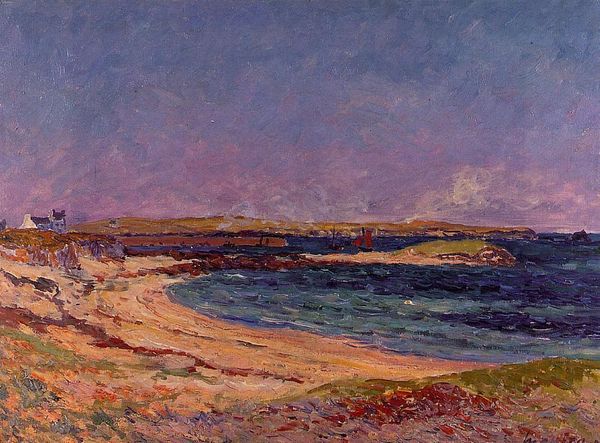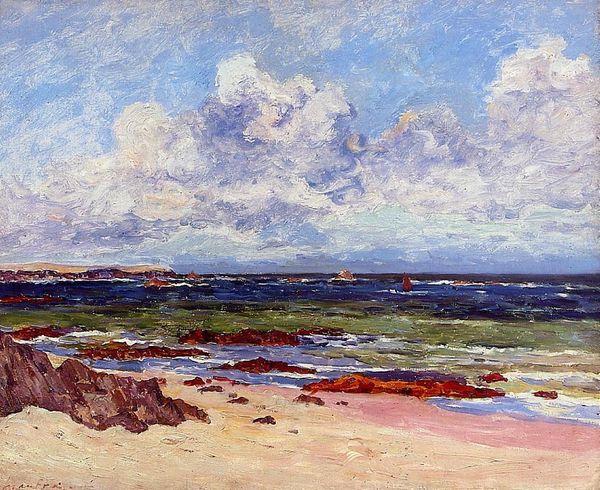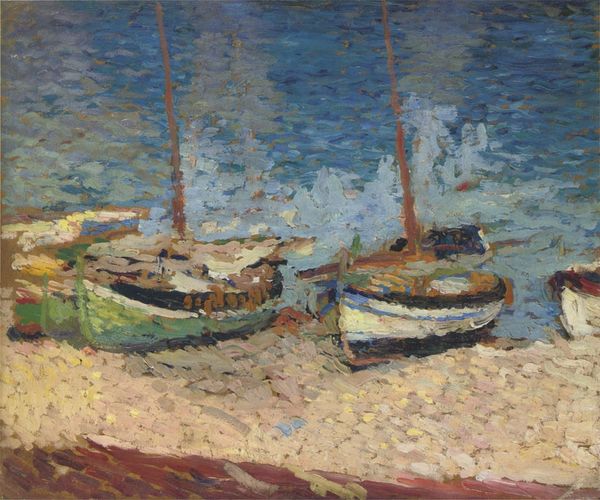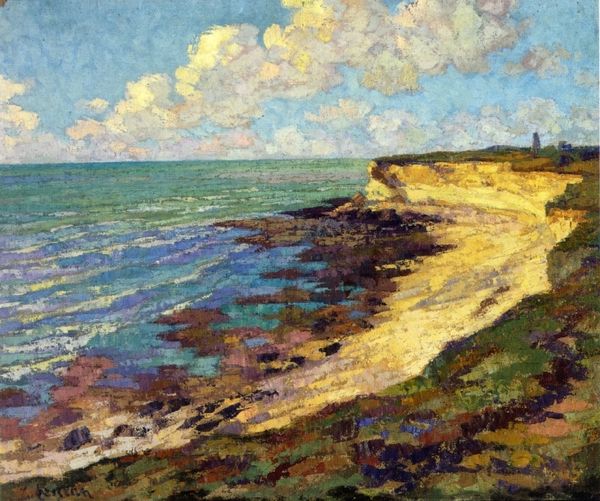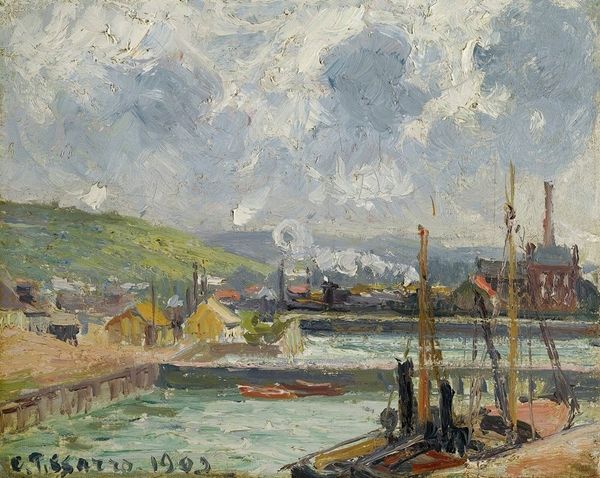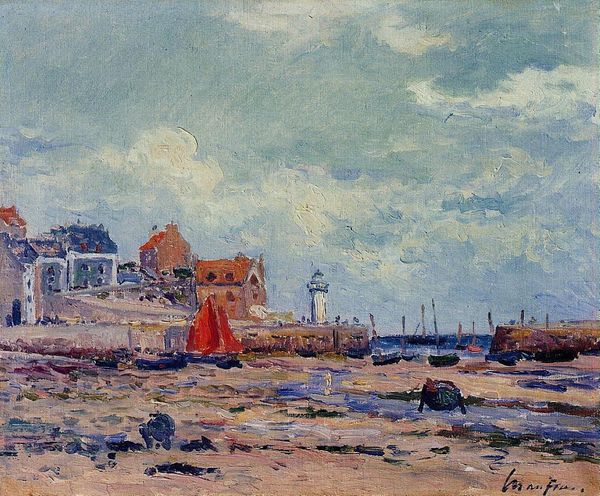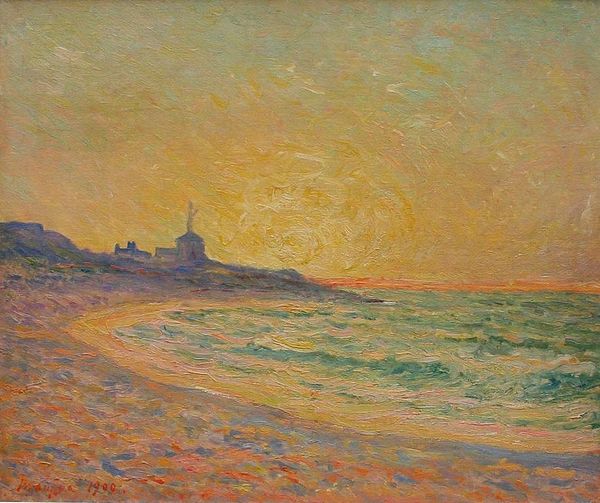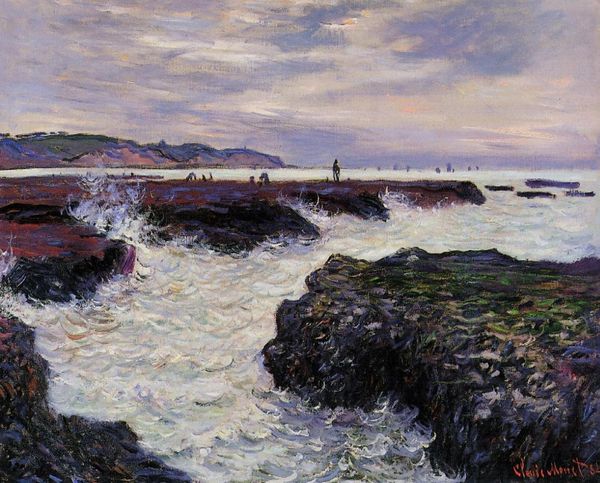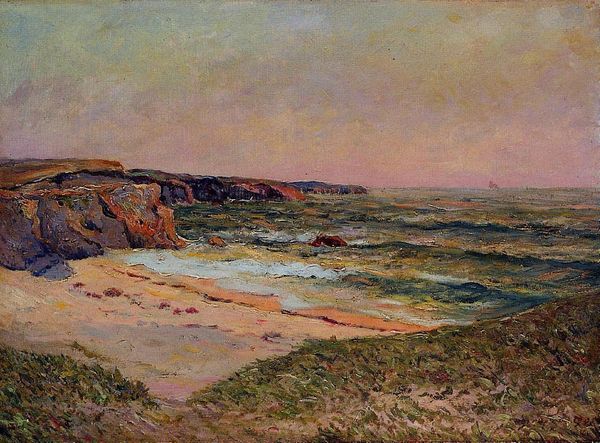
Copyright: Public Domain: Artvee
Curator: Immediately striking; it feels wistful, wouldn’t you say? There’s a hazy melancholic feel, almost like a memory fading at the edges. Editor: Perhaps it's intentional, a nod to the transient nature of these beach communities—a place of refuge but also deeply connected to ideas around labor and class at the time. Curator: Interesting perspective! This painting, called “Beach Scene,” by William James Glackens, dates from before 1930. The texture seems very heavy—it’s worked in oil paint with very visible brushstrokes. Editor: The boats especially! You can almost feel the impasto suggesting their rough, weathered hulls. They seem so still, almost burdened. In the visual vocabulary of boats, there's always that implied journey, both desired and forbidden, wouldn't you agree? Curator: Absolutely. I’d wager that the work points to tensions Glackens himself faced navigating social and artistic circles during a transformative period in US history. The boats themselves can be symbols, emblems of escape and exploration but, realistically, they could just be tools for making a living, forever tied to social circumstances and economic disparity. The composition feels intentional here; it suggests more than meets the eye. Editor: What stands out to me is the absence of figures. This reinforces a feeling of stillness, that brief pause just before something changes. The scene as a kind of mirror, beckoning the viewer to look inward and project narratives into that void? Glackens could be reflecting his era's anxieties, of progress and disruption, through those quiet moments. It also reminds me a lot about certain modernist currents in the United States at the beginning of the twentieth century: social realist ideas and paintings, the everyday shown from unusual angles. Curator: Yes, his proximity to the Ashcan School of painting further emphasizes how he was grappling with the sociopolitical. A stark and potent look at what some would consider a sanctuary, viewed instead from the fringes. Editor: In conclusion, this work is both simple and nuanced. A familiar seascape with symbolic depth and an understanding that resonates with broader historical, social, and personal implications. Curator: Right. Through these visual cues and his stylistic choices, Glackens subtly captures the temper and tensions of his time, reminding us of art's potential to act as an intersectional historical artifact.
Comments
No comments
Be the first to comment and join the conversation on the ultimate creative platform.
